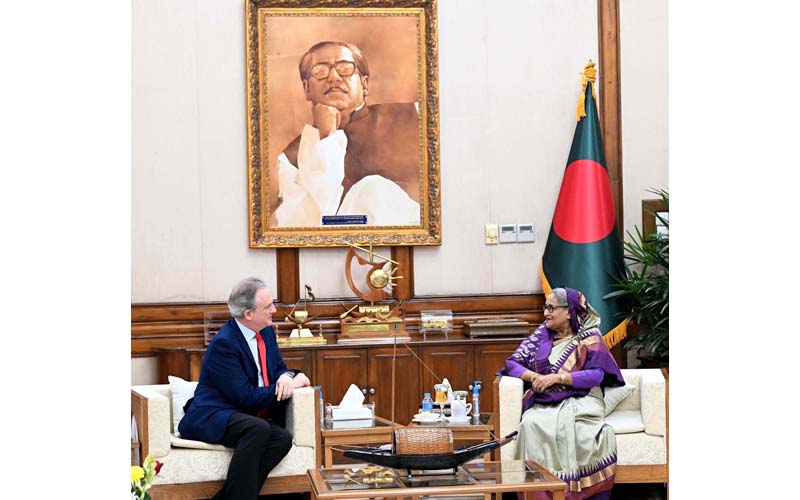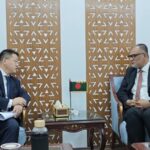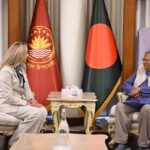 Qazi Mizan: Under the UN resolutions, Kashmir is a bilateral issue that both Pakistan and India shall resolve together. However, after 9/11, India has been successful in framing the Kashmir freedom struggle as terrorism. It was the beginning of brutal suppression of the Kashmir freedom struggle that culminated on August 5, 2019 when, out of fear of retribution and retaliation, the entire Kashmiri leadership was put under house arrest. The suspension of internet connection rendered the region incommunicado. For months, people in Kashmir were restricted to their homes because of the heavy deployment of the Indian Army which could cross any limit to harass Kashmiri women, kill Kashmiri youth, intimidate Kashmiri elders and make their children blind using pellet guns.
Qazi Mizan: Under the UN resolutions, Kashmir is a bilateral issue that both Pakistan and India shall resolve together. However, after 9/11, India has been successful in framing the Kashmir freedom struggle as terrorism. It was the beginning of brutal suppression of the Kashmir freedom struggle that culminated on August 5, 2019 when, out of fear of retribution and retaliation, the entire Kashmiri leadership was put under house arrest. The suspension of internet connection rendered the region incommunicado. For months, people in Kashmir were restricted to their homes because of the heavy deployment of the Indian Army which could cross any limit to harass Kashmiri women, kill Kashmiri youth, intimidate Kashmiri elders and make their children blind using pellet guns.
India had justified its unilateral decision to revoke Kashmir’s autonomous status by projecting it as the result of the failure of the region’s two political families, the Abdullahs and the Muftis, both according to the BJP stalwarts, had been milking the 35A status. “Members of the two families are still intoxicated and think that Kashmir is their father’s property,” Jamyang Tsering Namgyal, the BJP MP from Ladakh, said in Parliament.
So, the BJP believed that by breaking the jinx (35A) that had discouraged private players from participating in the economic development of Kashmir, the issue of militancy would be taken care of on its own — a classic example of missing trees for the forest.
The stress on the economy was an attempt to falsely present the three-decade-old armed resistance as a consequence of economic deprivation and not a result of human rights violations, the culture of political marginalisation and Delhi’s decisive policies of capturing and killing the insurgents instead of engaging with them as stakeholders in the conflict. According to a report published in Frontline, dated August 3, 2020, titled ‘Kashmir’s endless agony’, by Anando Bhakto, “Businessmen in Srinagar’s ritzy Polo View market told this reporter in August 2019 that the goods and services tax was implemented (in the State) despite Article 370 and that big business houses such as Oberoi and Taj forayed into the State without any hassle.”
At the heart of this exercise of recapturing Kashmir are Prime Minister Modi’s two objectives: to acquire back the so-called lost Hindu holy land and to alter the Muslim majority demography of Kashmir through a deliberate penetration of Hindus. Ever since the abrogation of 35A, according to Iltija Mufti, the daughter of former Chief Minister Mehbooba Mufti, “there has been a systematic purge of Kashmiri employees from government jobs and administrative postings. Mining contracts are being outsourced to non-locals. The Army can now take possession of land anywhere in Jammu & Kashmir and build infrastructure.”
On October 26, 2020, Delhi introduced the Union Territory of Jammu & Kashmir Reorganization (Adaptation of State Laws) Fifth Order, 2020 and repealed 12 state laws, including the historic land reforms laws, and amended 14 laws, some of which deal with the sale and purchase of land in Jammu & Kashmir. The changes applied only to J&K and not to Ladakh. Instead of stripping away protection, the government said it was open to discussing the Sixth Schedule Status with Ladakh.
All these hysterical moves, aimed only at J&K, suggest that India has been aiming at bringing permanent demographic changes to either reduce the Muslims into a minority or to even out their majority status. Now, India’s Supreme Court has also supported Modi’s decision to impose a Hindu nationalist agenda on Kashmir.







